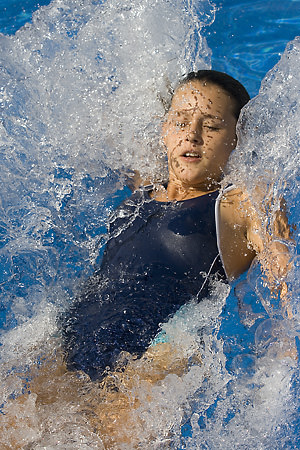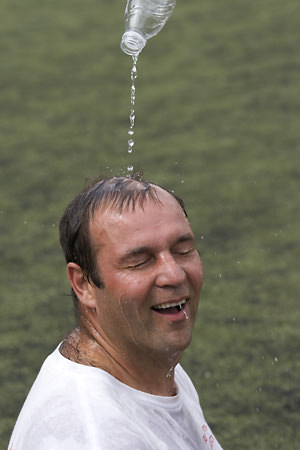Photographing Sports and Action - Page 2
Get as Close as you Can
The most important thing is to get as close to the action as you can. Most of the shots on these two pages were taken with a 70-200mm zoom but I still needed to be pretty close to really fill the frame. You need to lie cheat and bully your way to the front or you'll never get truly great pictures. I've never met a mild mannered press or sports photographer, sharp elbows are the best asset you can have. There are nearly always limits to how close you can get, but make sure you are as close as you possibly can be. An extra long lens is no substitute for being ten yards closer to the action.
Shutter Speed
With 'normal' photography the only concern is to make sure that the shutter speed is sufficiently fast so as not to show any 'camera shake', but when taking action photos you can be quite creative with the shutter speed you select. It's all about relative motion. If you look back at the tennis pictures on the previous page, which were taken at moderate shutter speeds, you will see that everything except the fast moving racket and ball has been rendered sharp. Below you can see more extreme use of different shutter speeds in an attempt to either freeze everything, as on the right, or give a feeling of speed by blurring the background and the faster moving parts of the body.
When trying out the slow shutter speed technique you need to experiment with different shutter speed settings and expect a high failure rate. The exact shutter speed you need will depend on how fast the subject is moving and how smoothly. If you photograph a car passing at speed and your panning technique is good, you can get a really sharp car with blurred wheels and a nicely blurred background.
Panning
'Panning' is moving the camera to follow the subject and is best done with the camera on a tripod, you can see that I didn't use one here by the shape of the background streaks. If I had used a tripod these would be straight. However the most important thing about panning is to do it smoothly and in time with the moving object. Start panning the camera well before you open the shutter and continue well after the shutter is closed. Think of it like a golf swing, but in the horizontal.
 |
 |
| A shutter speed of 1/20th of a second shows plenty of blur and gives a feeling of speed, by panning the camera with the runner I was able to render her sharper than the background. Ideally I would have liked the torso to be sharper than this which would have meant using a slightly faster shutter speed. | 1/2000th of a second still didn't quite freeze the water splash, I had to use a little bit of sharpening to tidy this photo up. These two pictures however, do illustrate the extremes of shutter speed choice. |
Apertures
Apertures in sports photography need in general to be kept wide to blur the background and help the subject to stand out.
It can be tempting to set the aperture smaller to get that extra depth of field which then gives you a bit more latitude with the focusing, but so often in sports photography the background will be cluttered and you need to throw it out of focus.
This is lucky really because most of the time you need the fastest shutter speed you can get, I will often set the ISO at 400 even on a sunny day to give me that extra bit of speed.
 |
 |
The idea is to produce well defined, uncluttered pictures which capture the moment and capture some of the excitement of the event. Be prepared for a high failure rate. I will shoot about 200 pictures or more at an event and am happy if I get a dozen that I can call good. But that's the beauty of digital photography, the failures don't cost us anything.

If you enjoyed this page you might
be interested in my eBook
Learn Photography with Geoff Lawrence